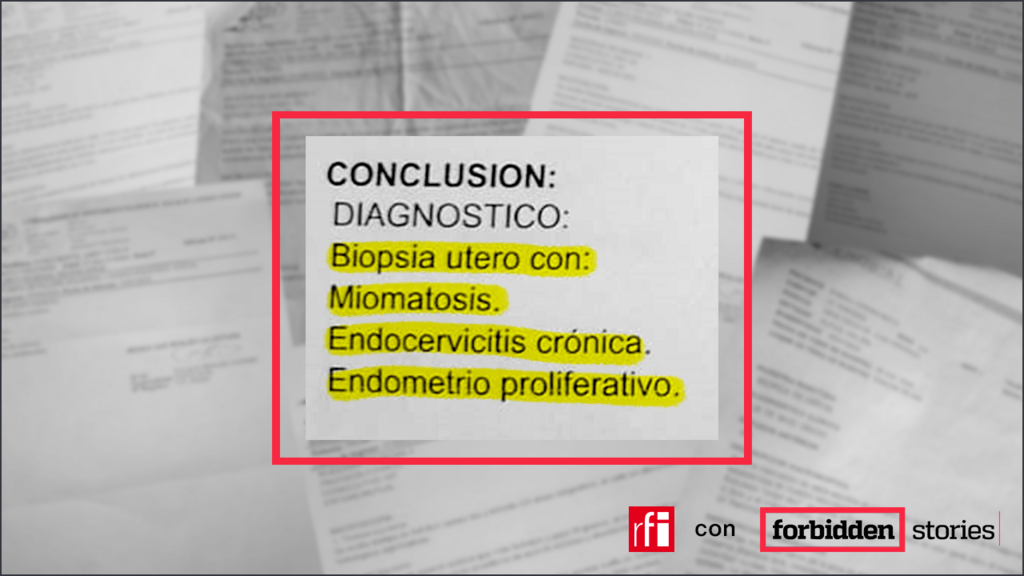First modification: Last modification:
Colombia – Just 10 kilometers from the ferronickel giant, in San José de Uré a health drama is taking place in silence. Diseases that the National Institute of Legal Medicine related to the extractive activities of Cerro Matoso SA are multiplying. The company objects to the rigor of these studies and maintains that the health problems of neighboring communities are due to social determinants such as poverty and unsanitary conditions. Here is the second part of the fifth episode of our special investigation.
RFI partners with the international investigative consortium Forbidden Stories (Historias Prohibidas) to continue the work of Colombian journalist Rafael Moreno cut short with his murder on October 16, 2022, in circumstances that have not yet been elucidated. Among his denunciations, Moreno had brought to light the dark practices of the large mining companies that operate in the south of the department of Córdoba: among them, Cerro Matoso SA, one of the largest open-pit nickel mines in the world. .
Report by Angélica Pérez and Aabla Jounaïdi
“It is full of fibroids, you have to remove it. That’s what the doctor told me.” The phrase is repeated in the story of each of the women from the urban area with whom we spoke, Underwent hysterectomies in the last two years (removal of the uterus) for presenting a large number of fibroids in this reproductive organ.
We were able to verify that there are at least twenty. It was easy to find them. Some live on the same block. Others are family. They all suffered the same symptoms: severe and prolonged bleeding -many times with expulsion of clots- and excruciating pain. One by one they ask the same question: “Why do so many of us suffer from this disease?”
Also read the first part of this fifth episode of the Rafael Project
There is no medical answer. What is certain is that the National Institute of Legal Medicine and Forensic Sciences established, from 1,147 blood samples taken in the areas of influence of Cerro Matoso, a correlation between the extractive operations of Cerro Matoso SA and 17 diseases suffered by the population at proximity of the mine1. Fibroids in the uterus are part of that list.
The Institute of Legal Medicine found that the levels obtained in the blood and urine samples “are above the data provided by studies carried out worldwide and even for studies carried out on workers with chronic exposure to nickel”.
“What Medicine did was an expert opinion and not a diagnosis. But when one carries out the patient evaluation with scientific rigor, one concludes something else”, objects Dr. Jorge Ospina, director of the Panzenú Foundation, the mining clinic that -as ordered by the Constitutional Court ruling- provides free care and permanent service to company workers and surrounding communities. “We serve an average of four people per day,” says the director.
In San José de Uré, the women who underwent hysterectomies assure us that they have never received care in that entity. Some claim not to know of its existence. They have only benefited from the state health subsidy for low-income people. And they were intervened at the San Jorge de Montelíbano regional hospital because San José de Uré, which has about 11,000 inhabitants, only has first-level health care.
Another “inexplicable” disease threatens the lives of Uresans: six children have been born without an anus and with both sexes. “The last one died three years ago,” says Elsin Yoneris Pérez, a nurse and member of the Cimarrón Justo Chávez organization of blacks. She is one of the women whose uterus has recently been extruded due to the very high presence of fibroids.
For the director of the Cerro Matoso SA Clinic, there is no effect on the health of the population due to the presence of the mine. “What we have around the mine are a series of unmet needs for Social determinants that go far beyond the presence of Cerro Matoso SA”, affirms the specialist doctor in public health.
“The measures that Cerro Matoso claims to be implementing on the health issue have only been proven by the company itself. There is no follow-up that contrasts, verifies, checks or disqualifies that data. It is the State that has to monitor. The Public Prosecutor’s Office should focus on the judgment of the Court”, explains Mauricio Madrigal, director of the Legal Clinic for the Environment and Human Rights at the Universidad de los Andes.
The lawyer underlines the difficulty of establishing a causal link in a context of great marginalization in which the communities do not even have drinking water. According to the expert, as long as Colombia does not have health baselines and public scientific reports on the link between environmental deterioration and contamination with the public health of communities, it is very difficult to establish that air and water pollution is what produces these diseases in the neighboring population of the mine.
Also read the third part of this fifth episode of the Rafael Project
For his part, The National Mining Agency (ANM) objected to a recent study by the Javeriana University, contracted by Cerro Matoso SA, on the “determining agents” of the contamination caused by the mine. “The study was prepared from secondary sources: documents. And not primary: the population. In addition, it analyzed all the emissions from the environment, coal, gas, etc., and not exclusively those from Cerro Matoso, as it should have been”, says Alvaro Pardo.
A prominent environmentalist and fierce “anti-miner,” Pardo was appointed head of the ANM by the country’s first left-wing government in which the inhabitants of Córdoba placed their hope: 28 of the department’s 30 municipalities elected Gustavo Petro and Francia Márquez to change course to their destination. In San José de Uré, they obtained 80% of the votes.
1. The complete list of diseases that appears in the sentence cites lung cancer, flat atelectasis, silicosis, carcinomatous lymphangitis, rheumatoid pneumoconiosis, calcified nodules in the lung, chronic obstructive pulmonary disease, dermatitis, parenchymal bands, Caplan syndrome, pulmonary sarcoma , fibroids, elevated levels of nickel in the blood or urine, thickening of the lung fissure, mesothelioma, pruritic lesions, pityriasis.














